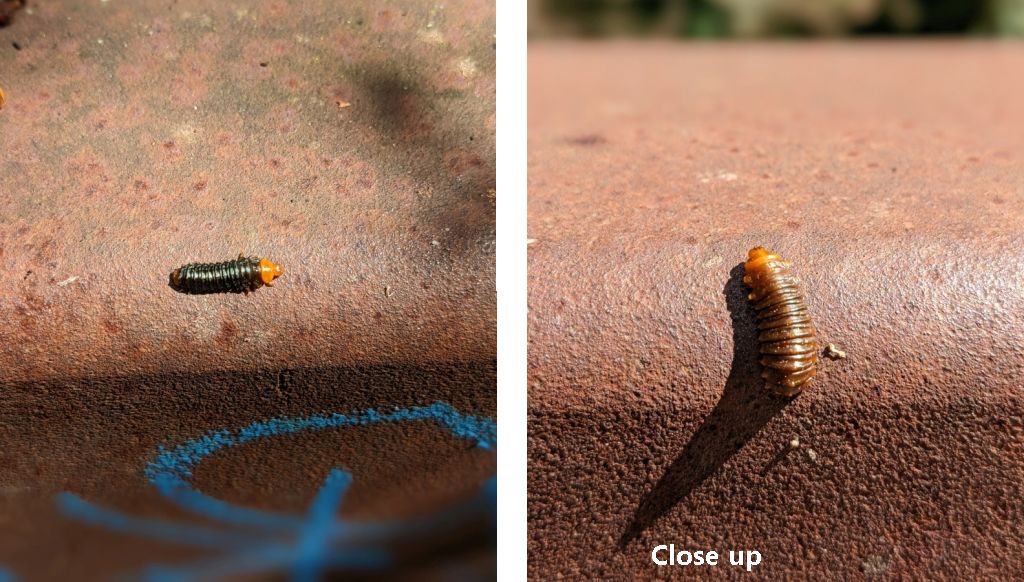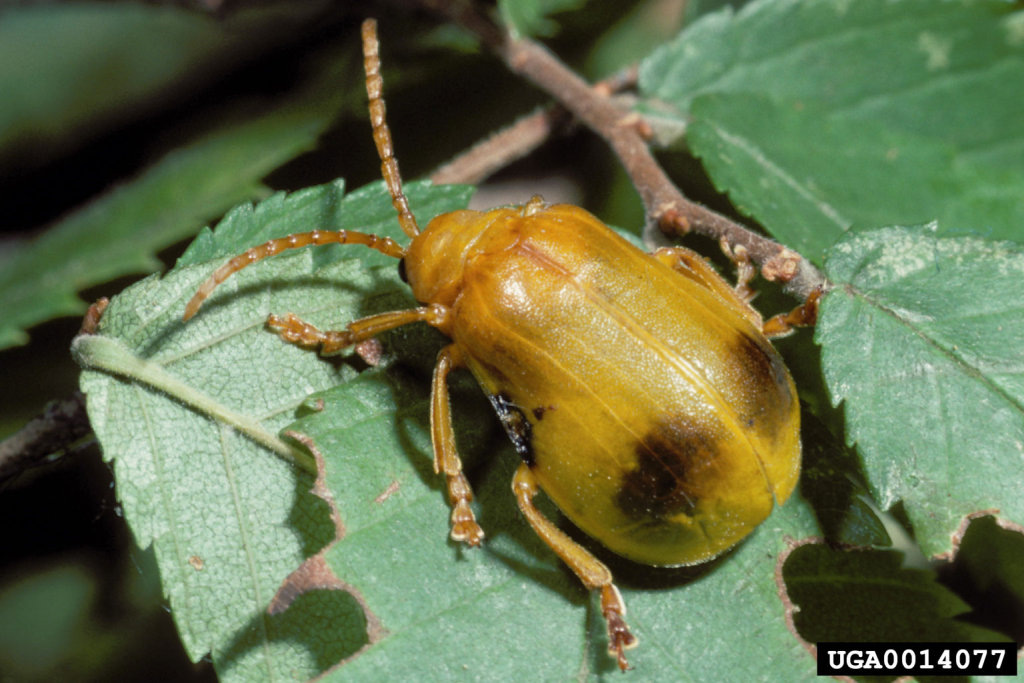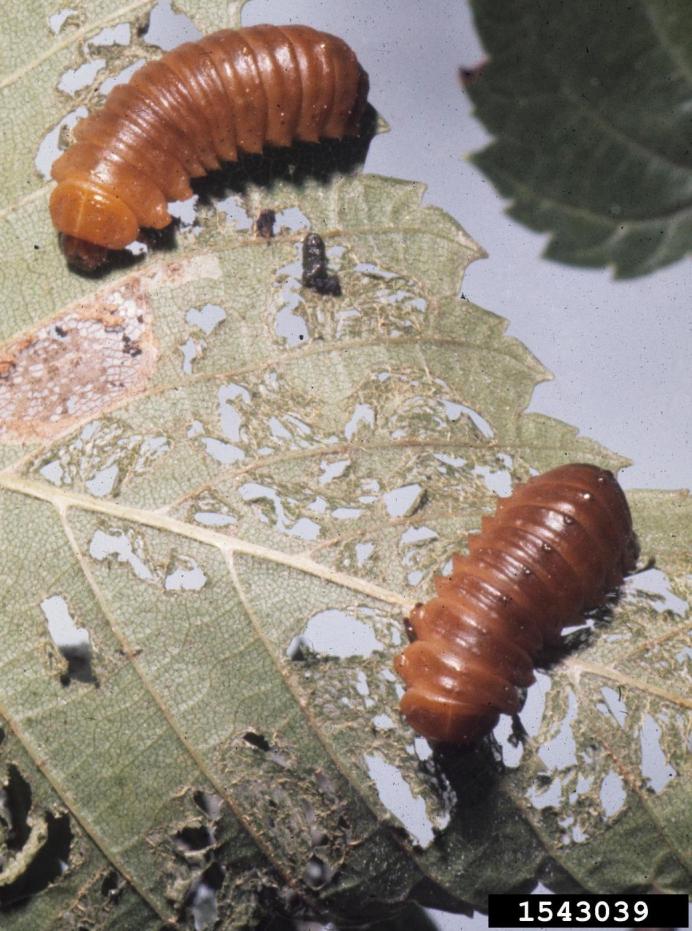
20 August 2022
Last weekend in Lower Frick Park Charity Kheshgi and I saw thousands of caterpillars and a lot of frass dropping from the trees above the pedestrian bridge over Nine Mile Run (pictured above).
Many insects are specialists, consuming a single plant family or genus during in their larval phase. If you can name the plant the caterpillar is eating, you can narrow down the identity of the bug.
Using that method I tried to name the leaves the caterpillars were skeletonizing (eating habits are another clue!) but most were too damaged to identify. Eventually I found a few intact elm-like leaves.
The photo match for “larvae that skeletonize elm leaves” included an adult form matches the golden yellow mystery beetle I saw this summer in Frick Park. These are larger elm leaf beetles (Monocesta coryli).

The “larger” beetle is a pretty big bug, shown for scale on someone’s hand in this photo by Bill Sweeney embedded from bugguide.net, and its color varies. Click here to see an orange one.
Here’s what it will do next.
There is only one generation per year. Eggs are laid in the spring in “hard yellow crusty” masses of 24 to 58 eggs on the undersides of elm leaves. They hatch in about two weeks.
The newly eclosed larvae are about 3 mm long and greenish-yellow. They are gregarious for three to four days and feed on leaf surfaces before dispersing. The mature larvae crawl down the tree and undergo a wandering phase for a few days before entering the ground, where they remain until pupation the following late winter or early spring. Pupation lasts about a month and adults begin emerging in April. Adults are active from April until early August, with most records from June to July. Both adults and larvae exude an orange, presumably defensive, fluid when disturbed.
— Univ of Florida Entomology: Larger Elm Leaf Beetle
So why are these not caterpillars? Because the larvae of beetles are called “grubs.”
(photos from bugwood, from bugguide and by Kate St. John, click on the captions to see the originals)

